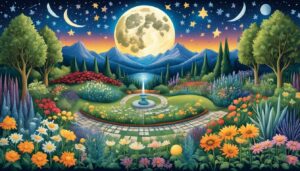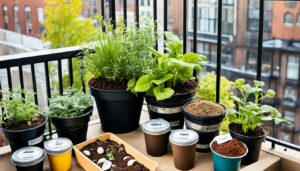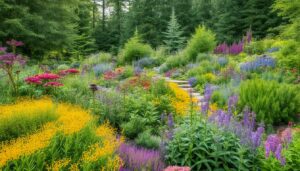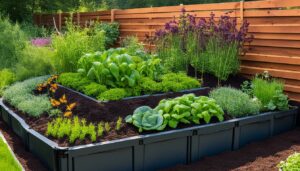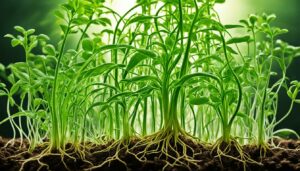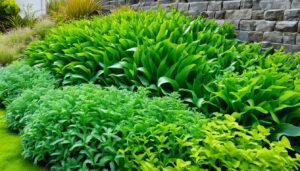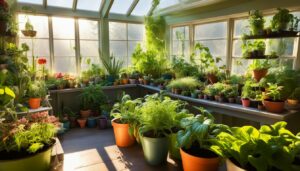In the quietude of your living space, a whisper of green might just be what whispers back a sense of calm. Picture this: a miniature, lush world thriving within the clarity of glass—a haven where tiny leaves unfurl in a world of their own, oblivious to the hustle and bustle beyond their transparent walls. This is the magic of terrarium gardening, a timeless craft that transforms the concept of indoor gardening into an art form. For both the green-thumbed and the notoriously plant-challenged, creating a terrarium offers not just a decorative touch but a gateway to a miniature Eden, a living tableau nestled within the confines of our homes and offices.
The fascination with these self-contained indoor glass gardens dates back to the Victorian era, evoking a sense of wonderment and nostalgia. Now, as radiant as ever, the trend of cultivating mini terrariums is blooming afresh, serving as a tangible piece of nature that teases with its intricate simplicity. It’s a world where tropical plants preen under misted glass, their roots nestled in a nurturing bed created with care and a whisper of exploration. It’s where choosing the ideal terrarium containers is as much a part of the journey as planting itself—the first step in what becomes a beautiful symbiosis between the gardener and the garden.
Key Takeaways
- Embrace the timeless charm of terrarium gardening, bringing a touch of Victorian elegance into modern living spaces.
- Discover the joy and simplicity of creating a terrarium, a small act that invokes a profound connection with nature.
- Learn how mini terrariums offer a sustainable, low-maintenance garden experience ideal for plant lovers of all levels.
- Explore the variety of terrarium containers available, understanding how each shape and size can influence your garden’s ecosystem.
- Appreciate the balance of beauty and function that indoor glass gardens represent, enhancing both aesthetics and well-being.
The Enchanting World of Terrarium Gardening
In the recesses of urban dwellings and amidst the bustle of modern life lies the charming world of terrarium gardening, a revival of the Victorians’ fascination with botany and miniature landscapes. Crafted with care, these tiny ecosystems encapsulate the art of closed glass jar gardening and invite nature into the smallest of spaces.
What is a Terrarium?
A terrarium is more than just an array of terrarium plants; it’s a self-supporting, mini ecosystem, often housed in a transparent container, which serves as a living exhibit of nature’s resilience. These pint-sized paradises are not only a means to bring the tranquility of greenery indoors but are also a creative canvas for those learning how to make a terrarium. The enchantment lies in their simplicity—light and water are the main sustenance for the plants within.
The Historical Roots of Terrariums
The romance of the Victorian era terrariums has not ended—it has merely evolved. Originally borne out of a serendipitous discovery by Dr. Nathaniel Ward, these glass vessels became a hallmark of refinement in the 19th century. Their popularity burgeoned among those who wished to showcase exotic plants, previously unreachable due to Britain’s less-than-tropical climate.
How Terrariums Mimic Natural Ecosystems
Understanding the fundamentals of a mini ecosystem can start with observing the workings of a terrarium. These self-contained gardens ingeniously recycle moisture through a process akin to the natural water cycle. Water evaporates, condenses on the glass, and precipitates back to the plants below. This cycle minimizes the need for watering, fostering a moist habitat ideal for a variety of terrarium plants.
| Feature | Closed Terrarium | Open Terrarium |
|---|---|---|
| Humidity Level | High | Low to Moderate |
| Typical Plants | Ferns, Mosses, Air Plants | Succulents, Cacti, Air Plants |
| Maintenance | Less Frequent | More Frequent |
| Ideal for | Moisture-Loving Plants | Drought-Resistant Plants |
Whether you envisage a lush, tropical scene or a sparse desert scape, the realm of terrarium gardening is as diverse as it is rewarding. This intersection of horticulture and artistry, where the small scale belies the grandeur of its impact, continues to capture the hearts of plant aficionados worldwide.
Choosing Your Terrarium Container
When diving into the world of DIY terrarium creation, one of the first steps is to select the appropriate glass terrarium containers. While the variety of available options can be overwhelming, focusing on certain features will help streamline the process and enhance your indoor gardening experience.
Understanding the specific requirements of your chosen plants is pivotal in selecting a container. Closed containers with lids are ideal for creating a humid, tropical mini-ecosystem, suitable for ferns and moisture-loving plants. Conversely, open containers, such as terrarium bowls or vases, are perfect for plants that thrive in a dry environment, such as cacti or succulents.
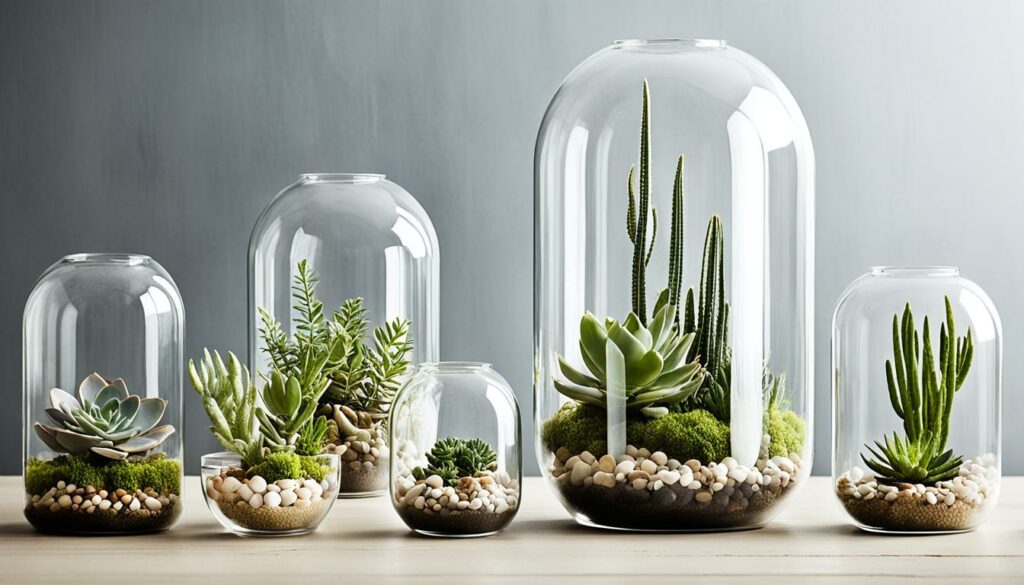
Let’s explore some popular terrarium design ideas and the features of various containers that could be the cornerstone of your terrarium project:
- Fish Bowls: Offering a classic rounded look, fish bowls allow for comprehensive visibility from all angles.
- Mason Jars: These provide a rustic appeal and are readily available; they work well for small terrariums.
- Wardian Cases: A nod to historical terrariums, these ornate enclosures can serve as elegant focal points in your decor.
- Specialized Terrarium Containers: Designed with terrariums in mind, they often feature wide openings for easy planting and maintenance.
Available in a broad range of shapes and sizes, the dimensions of your chosen container will also influence the internal conditions and ease of plant management. Larger containers cater to expansive designs and greater plant variety, while compact containers are suited for simple, minimalist terrarium landscapes.
| Container Type | Opening Width | Best For | Tools Required |
|---|---|---|---|
| Wide-Mouth Jars | Large | Easy planting & maintenance | None |
| Narrow Terrarium Bottles | Small | Challenging designs | Long Tweezers, Funnel |
| Angular Geometric Terrariums | Variable | Modern aesthetics | Variable |
| Hanging Globes | Small to Medium | Displaying air plants | String/Fishing line |
Remember that terrarium design ideas are not merely about aesthetics but also functionality. Whether you’re repurposing home items or purchasing new glass terrarium containers, consider the ecosystem compatibility, ease of assembly, and the joy of tending to your self-sustaining slice of nature in your living space.
Creating a Thriving Terrarium Ecosystem
Bringing a bit of the verdant outdoors into the comfort of your home can be both an art and a science. Constructing a mini terrarium not only embellishes your living space but also fosters a connection with nature through a contained, vibrant landscape. To ensure the longevity and health of your indoor garden, selecting the right supplies and understanding the nuances of terrarium layering is essential.
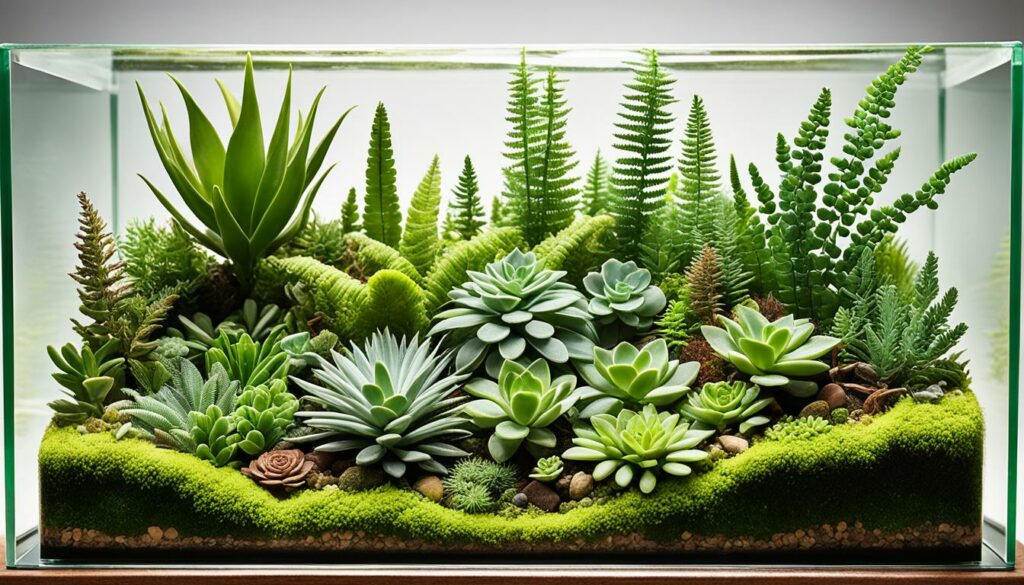
Selecting Suitable Plants for Your Indoor Garden
For the aspiring terrarium enthusiast, it begins with choosing the right terrarium plants that can thrive in the unique mini terrariums environment. The key is to look for moisture-loving tropical plants that enjoy the humid, self-regulating atmosphere a terrarium provides. Popular choices include:
- Miniature ferns like the Bird’s Nest or Japanese Holly varieties
- Peperomias with their well-versed adaptability and variegated foliage
- African violets for their vibrant blooms and compact size
- Various mosses that add lush greenery and aid in humidity retention
The Layering Process: Stones, Charcoal, Soil, and Moss
Once the green inhabitants of your terrarium are selected, you’ll need to gather your terrarium supplies for the crucial layering process. Here’s an outline of the layers that build the very foundation:
| Layer | Purpose | Materials | Thickness |
|---|---|---|---|
| Drainage | Prevents water from pooling | Small stones or gravel | 1-2 inches |
| Charcoal | Filtration and odor control | Activated charcoal | 1/2 inch |
| Soil | Support and Nutrition | Sterilized potting soil | 2-3 inches |
| Top Layer | Aesthetics and moisture control | Decorative moss or sand | 1/2 inch |
Each layer in the table plays a significant role, from ensuring efficient drainage to providing an ideal growing medium, culminating in an aesthetic and functional top dressing which could include pieces of bark or decorative stones.
Designing and Planting Your Mini Terrarium Ecosystem
With all layers in place, the next phase is to unleash your creativity while planting your miniature garden. Start with the tallest plant variety at the back, reducing the height as you move forwards, creating depth. Remember to space the plants to permit growth and air circulation. After planting, a light mist of water and proper placement in indirect sunlight will invite your terrarium ecosystem to flourish.
Enjoy the serene beauty as your mini terrarium becomes a conversation piece and an amalgamation of ecological precision and botanical splendor. With ongoing maintenance, that involves occasional pruning and watering, this self-sufficient world will thrive, entrancing onlookers with its timeless charm.
Conclusion
The art and science of terrarium gardening reflect the perfect amalgamation of botanical creativity and deliberate design. For those looking to infuse their living or working spaces with a touch of verdant charm, nurturing a DIY indoor garden presents a delightful and therapeutic journey. The serenity that comes from crafting a lush mini oasis in a glass container is unparalleled, offering a constant connection to the natural world in a compact, manageable form.
From selecting the ideal terrarium container to placing the final piece of moss, the process is infused with the joy of creating sustainable greenery that thrives with minimal care. This venture into terrarium creation empowers both green thumbs and gardening novices to foster a self-sufficient ecosystem that not only beautifies a space but also instills a deep appreciation for nature’s intricate balance.
Ultimately, the beauty of terrarium gardening lies in its simplicity and sustainability. It offers a personal retreat to calm and inspire—standing as an evergreen reminder of nature’s resilience and abundance. Embrace the tranquility that a beautifully constructed terrarium adds to your surroundings, making indoor gardening an accessible and fulfilling pastime for people of all ages and backgrounds.


